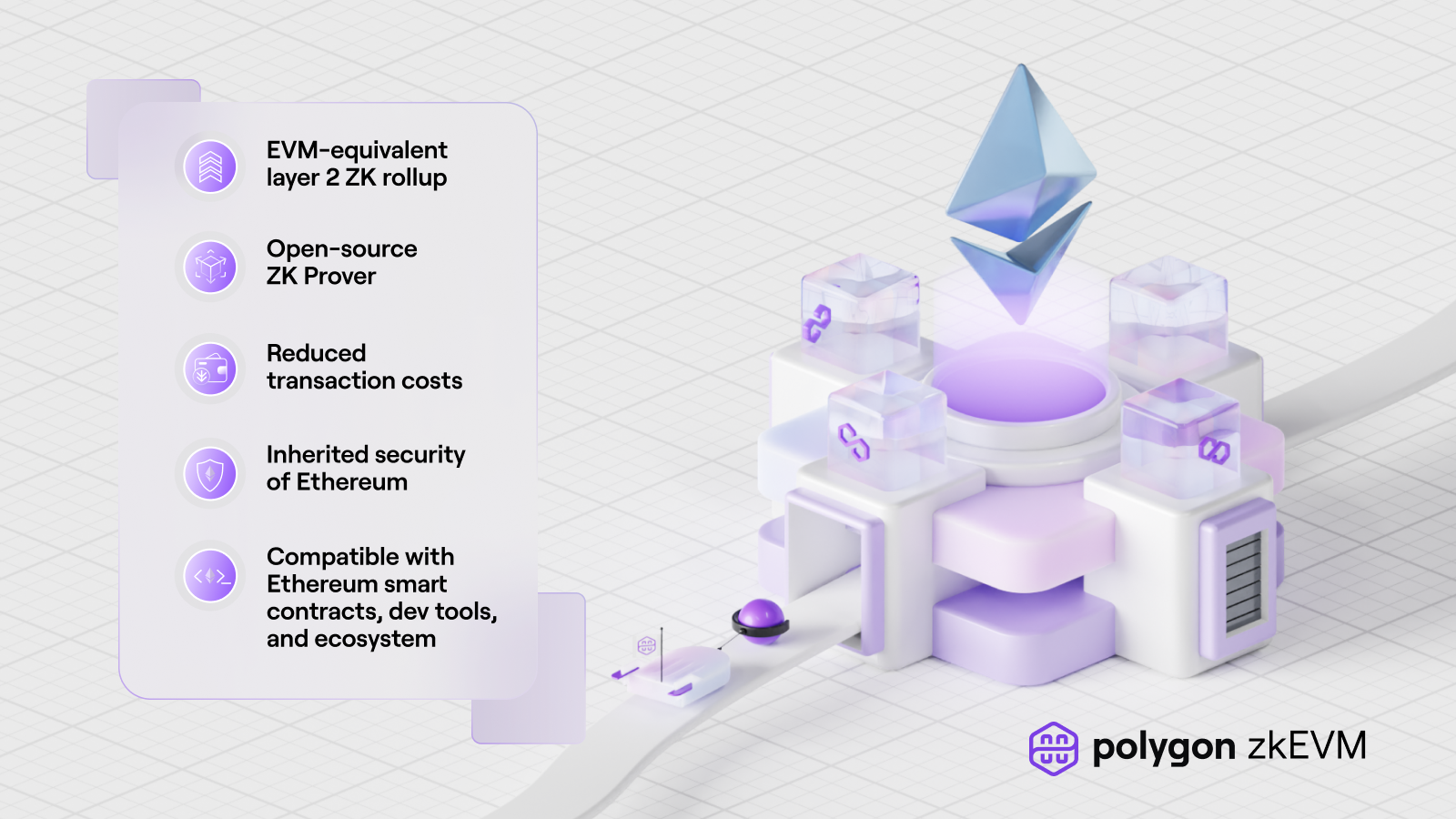
Polygon, the blockchain project has launched the public testnet zkEVM. This is a layer 2 (L2) scaling solution that was announced in July. It aims to lower fees and preserve the security of Ethereum’s blockchain. Polygon considers the testnet “the first open-source zkEVM network,” and developers are encouraging people to join the testnet, report bugs, and explore the code hosted on Github.
Polygon Releases zkEVM Testing Network
Polygon on Monday announced the project’s zkEVM testnet is live and the project’s team is inviting users to help them “battle-test” and speed up the process toward mainnet. Polygon’s zkEVM is a zk-rollup solution with Ethereum Virtual Machine (EVM) compatibility and the project is built to bolster scalability. The project summary hosted on Github notes that zkEVM “consists on a decentralized Ethereum Layer 2 scalability solution utilising cryptographic zero-knowledge technology to provide validation and fast finality of off-chain transaction computations.”
Aside from inviting people to try the project, decentralized financial (defi), platforms Uniswap, Aave, and Midnight Society will also be participating in the zkEVM network testing. Lens is a social media platform and gaming studio. “Using zero-knowledge (ZK) tech to scale the Ethereum Virtual Machine (EVM) is a big challenge,” Polygon saidMonday. “We want to keep what we love about Ethereum while harnessing the power of ZK proofs. Today, we take another big step towards scaling that doesn’t sacrifice EVM equivalence.”

The zkEVM testnet comes at a time when there’s a myriad of L2 projects advancing toward scaling Ethereum and a number of them leverage ZK technology. Loopring, Zksync and Arbitrum are L2 projects that aim to improve scalability and speed up transactions. Some L2 projects leverage ZK technology while others use optimistic rollups. The difference between the other L2s and zkEVM is the project’s EVM compatibility equivalence.
“EVM-equivalence is a spectrum, and the testnet version of Polygon zkEVM is not yet everything we want it to become,” the team’s blog post notes. “Vitalik’s framework currently puts our zkEVM in the ‘Type 3’ category of protocols, which are ‘almost EVM-equivalent, but make a few sacrifices to exact equivalence to further improve prover times and make the EVM easier to develop.’ Our goal is to become a Type 2, meaning Polygon zkEVM will eventually ‘look exactly like Ethereum ‘from within.’” The blog post adds:
We can accelerate towards Type 2 compatibility with the testnet.
What do you think about Polygon launching the project’s zkEVM testnet? Please comment below to let us know your thoughts on this topic.
Credits for the imageShutterstock. Pixabay. Wiki Commons
DisclaimerThis information is provided for educational purposes only. This article is not intended to be a solicitation or offer to sell or buy any product, service, or company. Bitcoin.com doesn’t offer investment, tax or legal advice. The author and the company are not responsible for any loss or damage caused or alleged caused by the content or use of any goods, services, or information mentioned in the article.